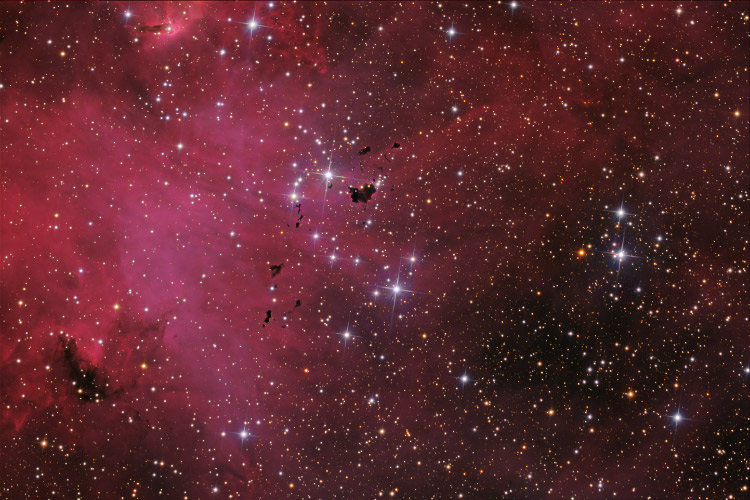
About this Image |
|
|
The emission nebula IC 2944 also named Running Chicken Nebula is housing interesting small scale structures.
|
|
|
| Optics |
20 " Keller cassegrain in corrected secondary focus at f/9 |
| Mount | Liebscher GEM |
| Camera | SBIG STL-11000M at -25C, 8-pos STL filter wheel |
| Filters | Baader RGB, H-alpha, (7 nm) |
| Date | May 03, 2008. |
| Location | IAS/Hakos Namibia |
| Sky Conditions |
dark skies, raw FWHM Ha: 1.6-1.9", raw FWHM RGB: 1.8-2.1" temperature 10-15 C, |
| Exposure |
R:G:B = 30:30:30 minutes (10-minute sub-exposures); synthetic luminance used;
Ha: 3 x 30 min subexposures |
| Programs used |
Maxim DL 4.5
CCDStack Photoshop CS3 |